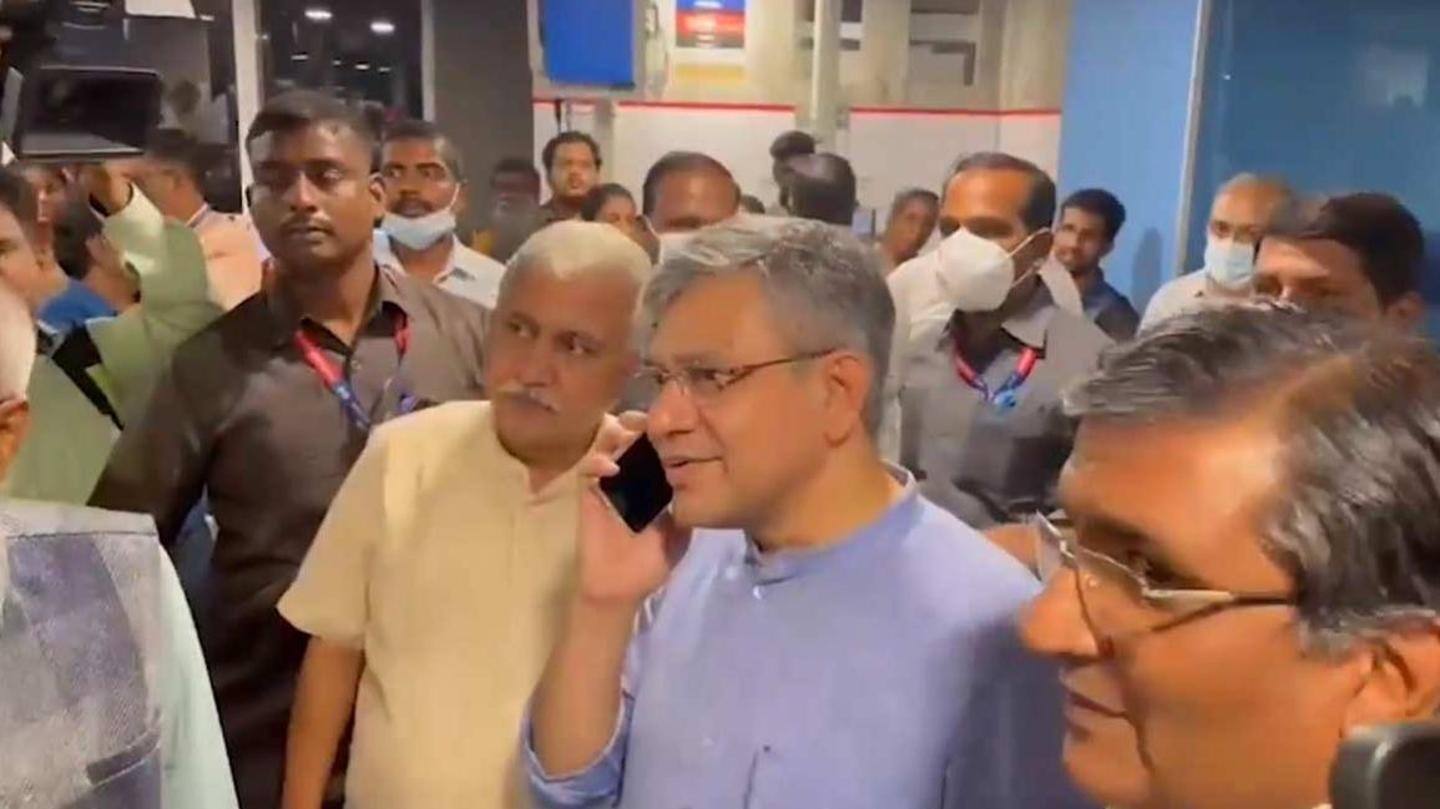
Union minister Ashwini Vaishnaw makes India's first 5G call
What's the story
IIT Madras played host to a historic event as union minister Ashwini Vaishnaw made the first 5G call on a trial network using indigenously-developed telecom gears.
The minister tweeted, "Aatmanirbhar 5G. Successfully tested 5G call. Entire end-to-end network is designed and developed in India."
Prime Minister Narendra Modi had inaugurated the country's first 5G test bed at the IIT Madras earlier this week.
Context
Why does this story matter?
India's vision for an 'aatmanirbhar' 5G has been on point till now. From the development of the 5Gi stack to 5G test bed and now the first 5G call, it has been (almost) flawless.
The incorporation of the country's indigenous 5G stack to the global standard paved the way for India to enter the exclusive telecom club dominated by China, Europe, and the US.
Twitter Post
Both audio and video calls were tested over 5G network
Aatmanirbhar 5G 🇮🇳
— Ashwini Vaishnaw (@AshwiniVaishnaw) May 19, 2022
Successfully tested 5G call at IIT Madras. Entire end to end network is designed and developed in India. pic.twitter.com/FGdzkD4LN0
5G plan
Technology behind the test call is indigenously designed and developed
The 5G voice over new radio (VoNR) technology used to make the call was designed and developed in India at the IIT Madras. This is part of India's vision to develop its own 5G stack.
The IIT Madras-led project which developed India's first 5G test bed is also part of that larger vision. It is set up in five locations across India.
Testing infra
What is a 5G test bed?
The 5G test bed helps start-ups and industry players to test and validate their products for installation in a 5G network. Earlier, those in India had to go abroad to accomplish this.
Other institutes involved in the development of the test bed are IIT Delhi, IIT Hyderabad, IIT Bombay, IIT Kanpur, IISc, SAMEER, and Centre of Excellence in Wireless Technology (CEWiT).
5Gi
India has developed its own 5G stack dubbed '5Gi'
The 5Gi is India's own 5G stack. It is the result of India's decision to develop its own 5G standard instead of importing the technology.
Developed under the supervision of Telecom Standard Development Society of India and DoT, with inputs from IITs and IISc, it will be ready by September-October.
It has been incorporated into the global 5G standard, 3GPP (3rd Generation Partnership Project).
Made for India
5Gi will make providing service in rural areas easier
The 5Gi is developed keeping in mind the specific requirements in India. It has a feature called Low Mobility Large Cell (LMLC) that enhances the signal transmission range of a base station.
This will help in providing telecom services in rural areas.
The incorporation of 5Gi into the 3GPP ensures that there won't be a fragmentation of the service by a separate 5G technology.